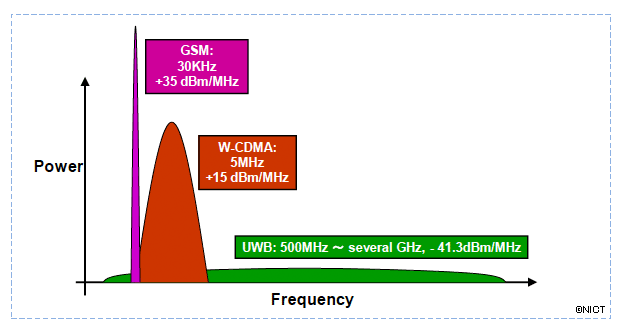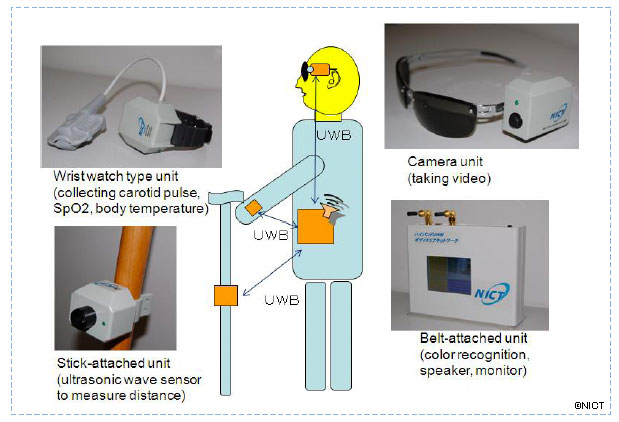By combining with various vital sensors (carotid pulse, SpO2, body temperature, etc.), BAN can provide good solutions for prevention of chronic diseases as well as for healthcare for elderly people. Moreover, BAN can also be used for entertainment by providing wireless transmission of voice, video, and data among devices deployed around a human body, such as game controllers and wireless headphones.
The inherent properties of low power consumption and low density of emission power of UWB (see Figure 1) benefit the implementation of BAN. As a result, UWB is specified as one of the PHYs in IEEE 802.15.6, to which NICT has made a lot of contributions. The available frequency bands for UWB contain a low-band and a high-band. Because other wireless systems also seek to use the low band, a number of limitations are addressed by regulations. Therefore, there is a need to develop a BAN system using the worldwide common UWB high-band.
It should be noticed that IEEE802.15.6 is an international standard under development, which defines the specifications of BAN for wireless links among devices deployed on body and in proximity of body.
























